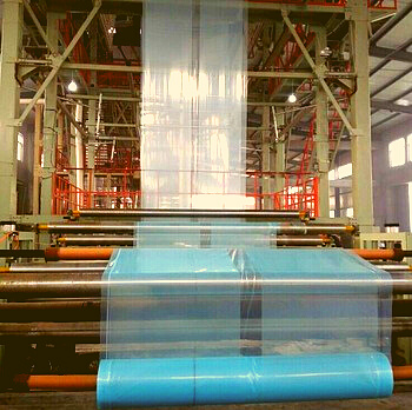Greenhouse plastic
5 MIN READ
You’ve often heard the term, ‘our plastic is UV treated’ and wonder what it all means. Let’s start by defining what UV is.
UV is an abbreviation for Ultraviolet and these Ultraviolet rays come from the sun. We all know how harmful these rays can be on anything. If you leave a piece of clothing long enough in the sun the colours would start to fade, what more of plastic?
When plastic is UV treated while in the manufacturing stage it goes through a special process of putting additives which include UV stabilisers amongst other things. This makes the plastic resistant to UV radiation that comes from the sun. A complex and technical process that is difficult to master that is why only a handful of companies can implement this successfully. In addition, they will give you a warranty on their plastic which varies with each manufacturer.

The plastic we sell at Greencon would have undergone that process and gone through strength tests as well as other quality tests. This is also true with all our other plastics, our greenhouse plastic typically has a 3 year UV warranty, whilst dam liners range from 4 – 8 years depending on the type you choose. There is often a belief that thicker greenhouse plastic has a longer UV warranty such as the 200-micron plastic outlasting the 150-micron because of thickness. This is simply not true if both have a 3-year warranty they will typically have the same lifetime, however, if there are other environmental factors at play like windiness then that’s a different story.
Signs of non UV treated plastic
- Yellowing of the plastic
- Bleaching of the plastic surface
- Formation of stress cracks
A typical question we often get is, ‘how long will plastic without UV protection last on my greenhouse?’ Not very long. You will be extremely lucky if it even lasts a year. Once the sun starts to degrade it and there’s a little wind, it will be ripped to shreds. Which will not only leave your crops exposed to harm but will set you back financially as well. You’ll be left with no option but to buy the proper greenhouse plastic. In the end, cheap always ends up being expensive. So when buying your plastic always ask if its UV treated and how long is the warranty to avoid being conned.
“All the greenhouse and dam liner plastic sold by Greencon is manufactured on expensive, ultra-modern and state of the art equipment, in ISO-accredited factories and to international norms. Every type of plastic sold will have a Product Data Sheet (PDS) which will indicate the properties, technical specifications, and mechanical/tensile strength of the plastic, the tests, and standards used. This PDS forms the basis for any UV warranty claim and all of these are done on a pro-rata basis. Without a PDS or a starting point for the UV warranty then the warranty is worthless as the UV warranty states that the product will have not less than 50% of its original strength at the end of its UV warranty period. A warranty and a life expectancy are not the same thing!”
Always seek out reputable sellers of greenhouse plastic and start off on the right note. If you buy ‘cheap’ plastic, in the long run it will cost you more because you’ll have to replace it more often which reduces your profits. Concerned about the expense? Remember that the plastic will last for at least 3 years if your greenhouse is set up correctly. So how many crop production cycles will that give you? If you plan properly the cost is covered in a short space of time.
Contributors – J. Vant & B. Hulbert

Hi there! This blog post couldn’t be written any better!
Looking at this article reminds me of my previous roommate!
He constantly kept preaching about this.
I am going to send this post to him. Fairly certain he’s going to have a very good read.
I appreciate you for sharing!